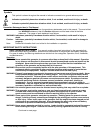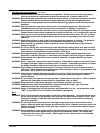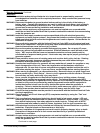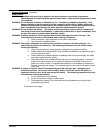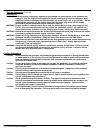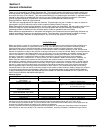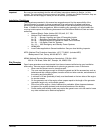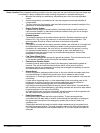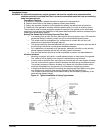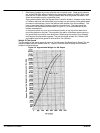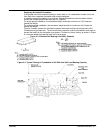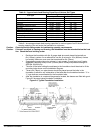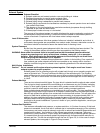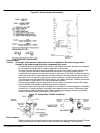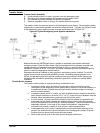
2‐4 General Information MN2408
Room Location Often a separate building located on the site away from the main building is the most simple and
cost effective. Major considerations when housing the genset in a separate building are:
S Maintain the building at a satisfactory temperature year round (to meet applicable
codes).
S Assure the genset is not located so far from the emergency loads that reliability is
compromised.
S The floor's load carrying capacity must be checked and must exceed the weight of the
genset and its associated equipment.
S Engine Cooling System
A genset with an engine mounted radiator is the least costly to install; however, the
room must be located in a place where sufficient radiator cooling air can be brought
into and exhausted from the room.
S Exhaust System
The exhaust system must minimize exhaust restriction. Exhaust restriction must be
limited to 3 in. Hg (76 mm Hg) maximum, to ensure proper engine operation. The
exhaust system should be as short and have as few bends as possible.
S Room Air
If the genset is cooled with an engine mounted radiator, and sufficient air is brought into
and exhausted from the room to satisfy the radiator cooling requirements and the
combustion air requirements, the room will not overheat when the genset is running.
If a remote mounted radiator or a heat exchanger is used, and adequate air is
circulated through the room to keep it at a reasonable temperature, there will be
adequate air for combustion.
S Fuel Tanks (Diesel Only)
Locate the fuel storage tank as near the genset as possible. This will minimize the cost
of fuel system installation and will maximize fuel system reliability.
S Controls and Transfer Switch
Locate the control switch gear as close to the emergency loads and the genset as
practical. This will minimize the chances that a failure of the power line to the
emergency load will go undetected. In locating the switchgear, accessibility for service
and maintenance must be considered.
S Genset Noise
Internal combustion engines produce noise, so the room should be located away from
occupied buildings. In addition the genset room can be treated to reduce noise
transmission. In locating the genset room, both engine, fan and exhaust noise must be
considered.
If noise within the genset room, or noise transmitted to the surrounding parts of the
building are a concern, then the room must be made large enough to allow for
installation of noise attenuating walls and noise absorbing walls.
Light weight concrete blocks filled with sand or special “sound block” concrete blocks
are commonly used. Noise attenuating, tight fitting windows and doors also help reduce
noise transmission to the rest of the building.
A double-walled room should be considered. Vibration isolators under the genset rails
will also reduce the transmission of noise through the floor.
S Code Requirements
Building and safety codes deal with engine location. These requirements are
concerned with fire rated walls, a location that minimizes the possibility of damage to
the genset and interruption of the emergency system due to storms, foods, fire,
vandalism, etc.
Codes often deal with the need to maintain certain temperatures in the genset room
and with fuel system location. The most important codes in the USA are the National
Fire Protection Association Code Numbers 99 and 110, but local codes must also be
observed.



